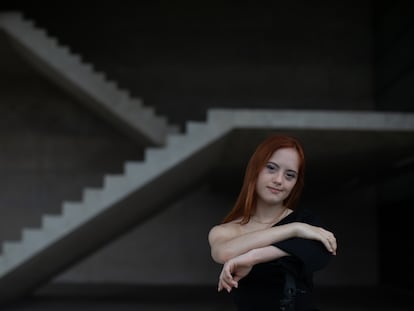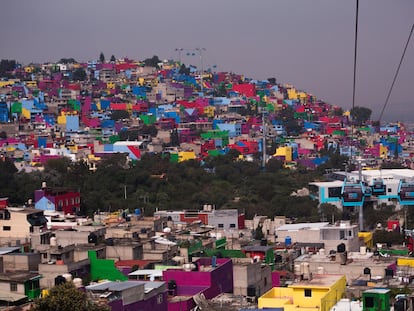Medellín: The corset capital of the world
Colombia is a world leader in manufacturing the garment and its export business is thriving, with demand even growing in the Middle East


Marcela Londoño is proud of her 14-year-old daughter’s discipline. “She wears her corset very diligently,” she says, as she receives fat-burning injections into her own arms. Londoño has been wearing corsets for years, she adds, not because she likes them, but to help with the surgery. With straightened black hair and a waistline she has worked hard to achieve, Londoño relies on the scalpel and lots and lots of corsets. She is far from unusual. Conversations like this can be regularly overheard in the hairdressers of the Belén neighborhood in the Colombian city of Medellín, the corset capital of the world.
Tightening, girding and reshaping are part of daily life for many women in Medellín, but it is also a thriving export business, employing thousands. For fans in the United States, Peru, Spain and Mexico, where demand is greatest, a Colombian corset is synonymous with quality. Now they are even making inroads in the Middle East.
The figures are especially impressive given the textile industry was hit hard by the coronavirus pandemic. Between January and June 2021, sales of Colombian girdles abroad increased 146% compared to the same period in 2020, and generated $45.5 million (€39.5 million). “Today Colombia is one of the leaders in exports worldwide, and has established itself as a competitive supplier that offers products with technology and quality,” says Flavia Santoro, president of ProColombia, a government agency promoting exports.
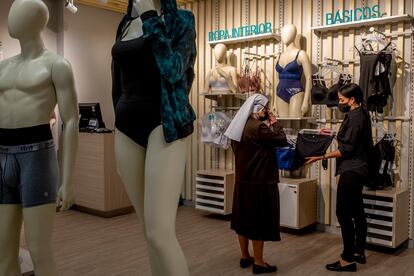
China remains the world leader in corset production but their products aim to reduce volume, while Colombia has evolved to mold new shapes, says Juan Fernando Loaiza, a specialist in economic research at Colombia’s Inexmoda fashion institute. Innovation is key to success in the world of fajas, as corsets are known in Spanish. “Latina women are often associated with curves and are demanding. Manufacturers have had to develop better and better garments, ranging from shaping girdles to lifting jeans,” says Loaiza.
But the history of this business that today generates pride in a textile city like Medellín is also associated with the past it wants to forget: the legacy of cartel boss Pablo Escobar and drug trafficking. In the 1980s, drug bosses used women as showpieces and paid for their plastic surgery. Many surgeons instructed their patients to wear girdles post-surgery, sometimes composed of little more than bandages. This obsession with a strictly modified body shape is still in evidence today. “Beauty pageants, which were so important in Colombia, also influenced the aesthetic ideal. Today everyone tries to transform their bodies, through exercise or surgery. Corsets are another form of transformation,” Loaiza adds.
The ability to see business that others miss is also considered a trademark of Medellín’s inhabitants. For years there were only a few corset makers, but according to José Giovanni Pacheco, manager of Fájate – which is one of the largest in the business – there are now about 2,300 shapewear companies and about 190 with large-scale exports.
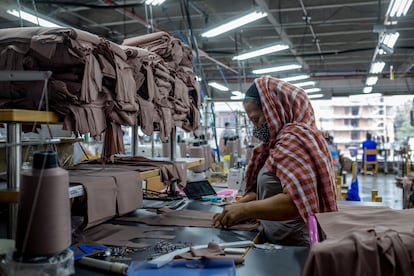
Fájate was born 30 years ago in a garage in the city and now exports to the United States, Iran, Russia and Africa. A surgical nurse and a fashion designer joined forces to start the business, beginning with a line of girdles designed for post-surgery and postpartum clients. “Surgery has made corsets possible,” says Juan Pablo Avendaño, international sales leader at the company, which employs more than 400 people. According to the International Society for Aesthetic Plastic Surgery (Isaps), 413,512 surgeries were performed in Colombia in 2018.
Over the years, the business has become more sophisticated. Opening a magazine displaying models of all sizes, Avendaño shows off 98 types of shapewear: bodysuits, control underwear, swimsuits, sports girdles, waistbands, strapless items, leggings, all with different levels of control, with an endless number of options.
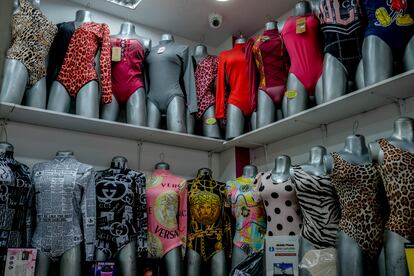
Claudia Machado is a fashion designer at Diane & Geordi, another corset exporter based in Bogotá. “The key to Colombian shapewear is the quality and durability of the fabrics. So many years of studying the body and bone structure of women have led us to create products that enhance without so much suffering for women,” she says.
At a time when many women are trying to form a more healthy and accepting relationship with their bodies, these companies are turning to more comfortable products. “People always imagine wasp-waist type girdles or corsets, but now we also have control sportswear, which helps to support the body during exercise, or swimsuits,” says Loaiza.
The Kardashian effect
The reputation of Colombian girdles reached its height in 2015, when US media personality Kim Kardashian posted a photo on Instagram for her 260 million followers wearing a corset made in Colombia by the Ann Chery brand. Kardashian then launched her own shapewear brand called Skims. It caused a stir in Medellín, where the image of corsets received a major international boost. “She is walking marketing,” says Avendaño. Strictly speaking, corset influencers agree that Skims aren’t tight enough to make a huge difference.
The Kardashian effect also removed the stigma that had accompanied corsets. Now worn as outerwear, they can be shown off in bright colors or animal print. However, not everyone wears them in plain sight. In the Middle East, where Colombian shapewear is arriving in force, they are worn underneath traditional gowns. According to Inexmoda, Kuwait and the United Arab Emirates are among the main destinations for exports. “The growth there coincides with the fact that these are countries with high per capita spending on ‘modest’ fashion. The challenge is to know the culture and the differences and understand what can be shown,” says Loaiza.
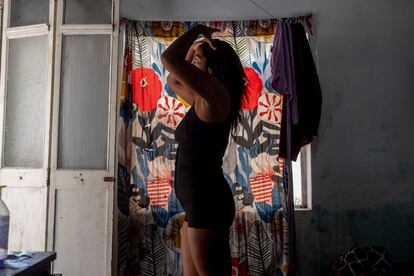
The effect of millions of people working from home during the pandemic sent a seismic shock through the Medellín corset market. After months of quarantine, and with gyms closed, women aged 35-55 years old – the main buyers – have turned to these garments once again for some control over their bodies.
Maria del Sol Gaviria, 43, started wearing them a year ago to exercise. Her daughter, Juanita Prada, 23, followed her lead, but under her clothes and for special occasions. Business is booming, says designer Claudia Machado. With a market so deeply rooted in the local culture and the interest of many women – and increasingly men – in shaping bodies, flattening their bellies, lifting busts and buttocks, the Medellín corset is on course to continue its journey into closets around the world.
Tu suscripción se está usando en otro dispositivo
¿Quieres añadir otro usuario a tu suscripción?
Si continúas leyendo en este dispositivo, no se podrá leer en el otro.
FlechaTu suscripción se está usando en otro dispositivo y solo puedes acceder a EL PAÍS desde un dispositivo a la vez.
Si quieres compartir tu cuenta, cambia tu suscripción a la modalidad Premium, así podrás añadir otro usuario. Cada uno accederá con su propia cuenta de email, lo que os permitirá personalizar vuestra experiencia en EL PAÍS.
¿Tienes una suscripción de empresa? Accede aquí para contratar más cuentas.
En el caso de no saber quién está usando tu cuenta, te recomendamos cambiar tu contraseña aquí.
Si decides continuar compartiendo tu cuenta, este mensaje se mostrará en tu dispositivo y en el de la otra persona que está usando tu cuenta de forma indefinida, afectando a tu experiencia de lectura. Puedes consultar aquí los términos y condiciones de la suscripción digital.
More information
Archived In
Últimas noticias
Most viewed
- Reinhard Genzel, Nobel laureate in physics: ‘One-minute videos will never give you the truth’
- Oona Chaplin: ‘I told James Cameron that I was living in a treehouse and starting a permaculture project with a friend’
- Pablo Escobar’s hippos: A serious environmental problem, 40 years on
- Why we lost the habit of sleeping in two segments and how that changed our sense of time
- Chevy Chase, the beloved comedian who was a monster off camera: ‘Not everyone hated him, just the people who’ve worked with him’
